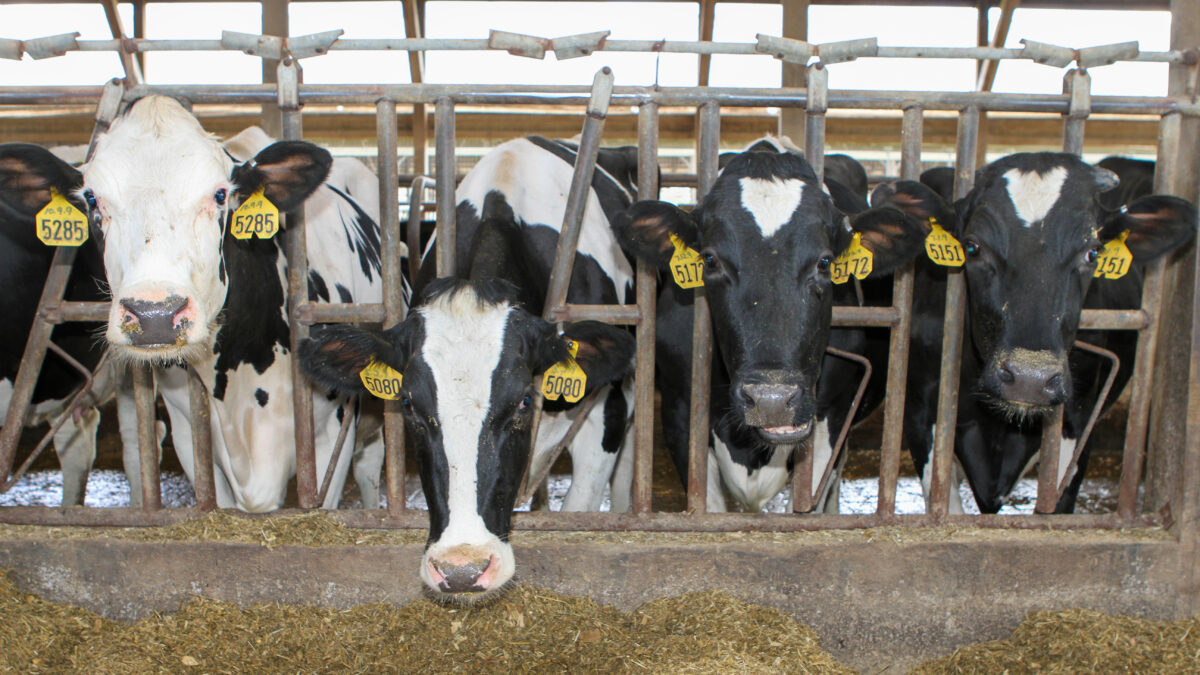The Top 10 Market Intel Articles of 2018
TOPICS
Trade
photo credit: Alabama Farmers Federation, Used with Permission
John Newton, Ph.D.
Chief Economist
During 2018, American Farm Bureau Federation’s Market Intel (@FBMarketIntel) published a total of 157 feature articles and Market Intel Minutes, garnering more than 200,000 page views from around the world. Here are our Top 10. What did we miss? Or what do you want us to cover in the New Year? Shoot us an email at marketintel@fb.org.
What Do the Tax Cuts Mean for Farmers and Ranchers?
Farm Bureau reviewed the Tax Cuts and Jobs Act (H.R.1) to determine the benefits for farmers and ranchers. Among the conclusions: the new tax package offered a significant reduction in tax liability and the effective rate that farmers will pay.
Dairy Revenue Protection is Here
Recognizing the need to enhance the federal risk management tools available to dairy producers, American Farm Bureau Federation, American Farm Bureau Insurance Services and other collaborators developed a new federal crop insurance product called Dairy Revenue Protection. Dairy Revenue Protection became available Oct. 9 and in two months covered more than 10 billion pounds of dairy farmers’ milk.
Trends in Beverage Milk Consumption
The Healthy, Hunger-Free Kids Act of 2010 reauthorized funding for school lunch programs. A key piece of the legislation that churned the dairy industry was a restriction on the milk served to nonfat white and flavored milk or 1 percent white milk. This article reviewed trends in fluid milk sales and considered the on-farm financial implications associated with higher fluid milk consumption.
Congressional Budget Office Updates Farm Bill Math
One of the key components of the farm bill negotiations is what’s known as “farm bill math.” The math underlying the 2018 farm bill was released in early April by the Congressional Budget Office. These baseline projections identify expected outlays associated with several programs important to farmers and ranchers, including the Supplemental Nutrition Assistance Program and mandatory USDA farm programs such as crop insurance, conservation and farm programs.
Spring Crop Insurance Prices Discovered
Every year USDA’s Risk Management Agency recalibrates crop revenue protection insurance policies to reflect updated market expectations of prices, price risk and revenue per acre. The crop insurance prices are determined by averaging Chicago Board of Trade (corn and soybeans) and Intercontinental Exchange (cotton) futures contract settlement prices during a month-long price discovery period. This article reviewed spring 2018 crop insurance prices.
U.S. Soybean Exports to China Fall Sharply
The retaliatory tariffs of 28 percent on U.S.-sourced soybeans resulted in a sharp decline in China’s purchases. This article reviewed the pace of soybean exports to China relative to USDA projections and found soybean shipments were down 98 percent early in the 2018/19 marketing year compared to prior-year levels.
African Swine Fever Outbreak in China
This was the first of a two-part series (African Swine Fever and China: Part II) reviewing the devastating outbreak of African Swine Fever in China. ASF is a serious, highly contagious, viral disease affecting pigs. With the largest pig herd in the world at over 400 million head, China is particularly vulnerable to ASF, which can spread very rapidly in pig populations by direct or indirect contact.
NAFTA by Commodity and By State in 2016
Whether farmers are raising cattle in Oklahoma, milking cows in Vermont, growing fruits and vegetables in Florida, or growing corn, soybeans and wheat in America's heartland, their agricultural income depends on trade. Many of these trade benefits come on the back of the North American Free Trade Agreement. This article reviewed U.S. Census Foreign Trade Division agricultural trade data to NAFTA partners by state and by commodity.
What is Dairy Revenue Protection?
Dairy Revenue Protection (Dairy-RP) is a concept plan of insurance, developed by the American Farm Bureau Federation, American Farm Bureau Insurance Services and other collaborators which would allow dairy farmers to purchase risk management protection against declines in quarterly revenue from milk sales. This article described the concept plan of insurance that was ultimately approved by USDA’s Federal Crop Insurance Corporation.
Net Farm Income Projected to Drop to 12-Year Low
Net farm income is a comprehensive indicator of U.S. farm profitability – for all crops and livestock – and includes cash receipts from farming as well as farm-related income, including government payments and noncash items like changes in inventories, economic depreciation and gross imputed rental income, minus cash expenses. This article reviewed USDA’s initial estimate of net farm income in 2018.
